Stable No-Grit Buttercream - In the world of cake decorating, the quest for the perfect buttercream is endless. Building on the success of our original No Grit Buttercream introduced on Cupcake Savvy's Kitchen YouTube channel in 2016, we're thrilled to unveil the NEW Improved more STABLE No-Grit Buttercream.
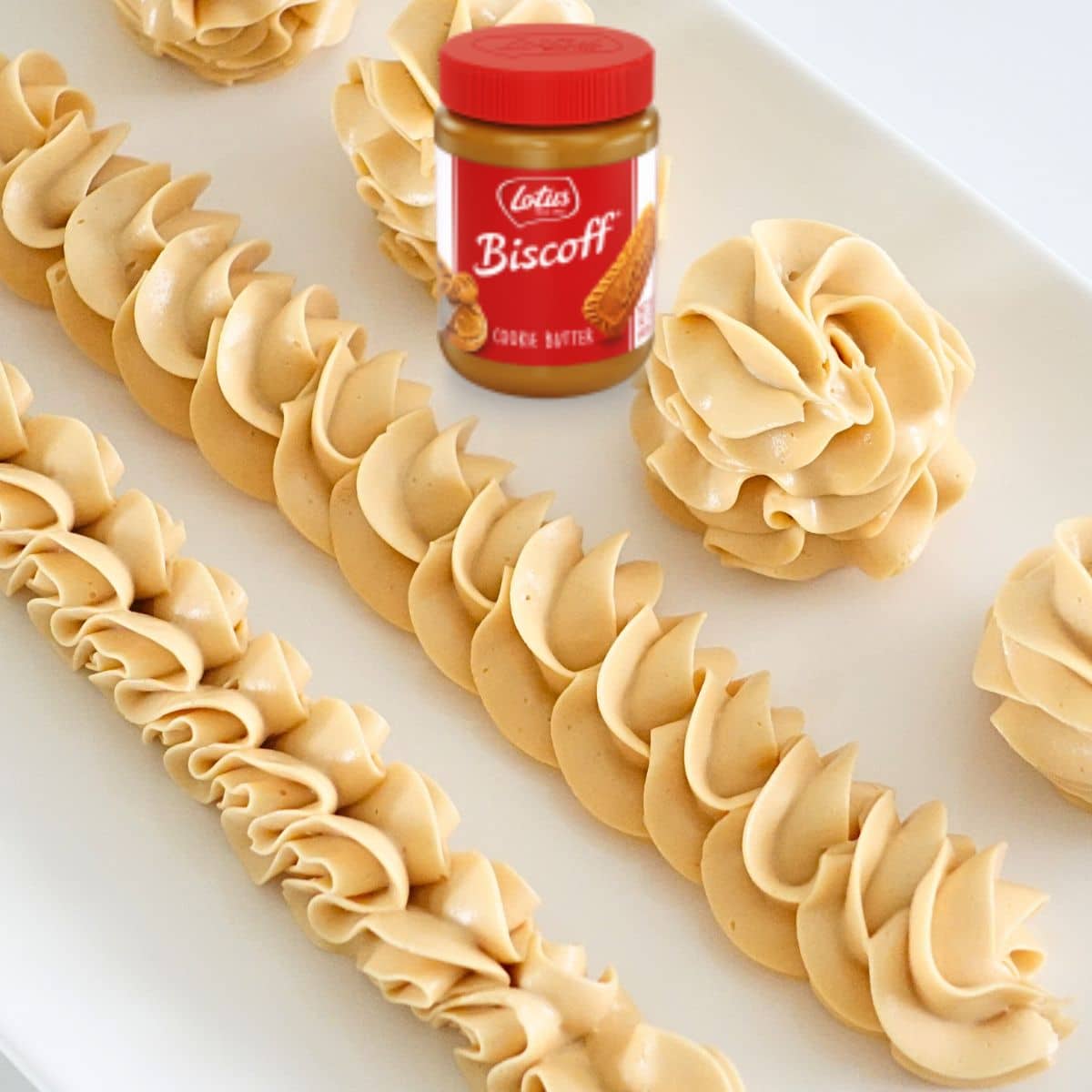
This recipe, created for our beloved 10,000 subscribers and beyond, is a testament to innovation in baking. This recipe has been copied and claimed many times over by many bakers.
In this improved version, we are utilizing granulated sugar to make a silky syrup. We've crafted a buttercream that's not only stable and silky smooth but also boasts a tantalizing Biscoff flavor.
Ideal for decorators seeking a no-grit, egg-free option that pipes beautifully, this buttercream is set to become a new favorite. Stay tuned for many more flavors coming soon including Matcha Buttercream!
Why You Will Love My Stable No Grit Buttercream
It's the no-grit texture all the way! This texture closely mimics the luscious feel of Swiss meringue buttercream but without the hassle and dietary concerns associated with using raw eggs.
Give our classic no-grit buttercream recipe a go with our Mocha Buttercream or Cream Cheese Buttercream variations. We're confident you'll fall in love with them too!

Ingredients Used To Make Stable No Grit Buttercream
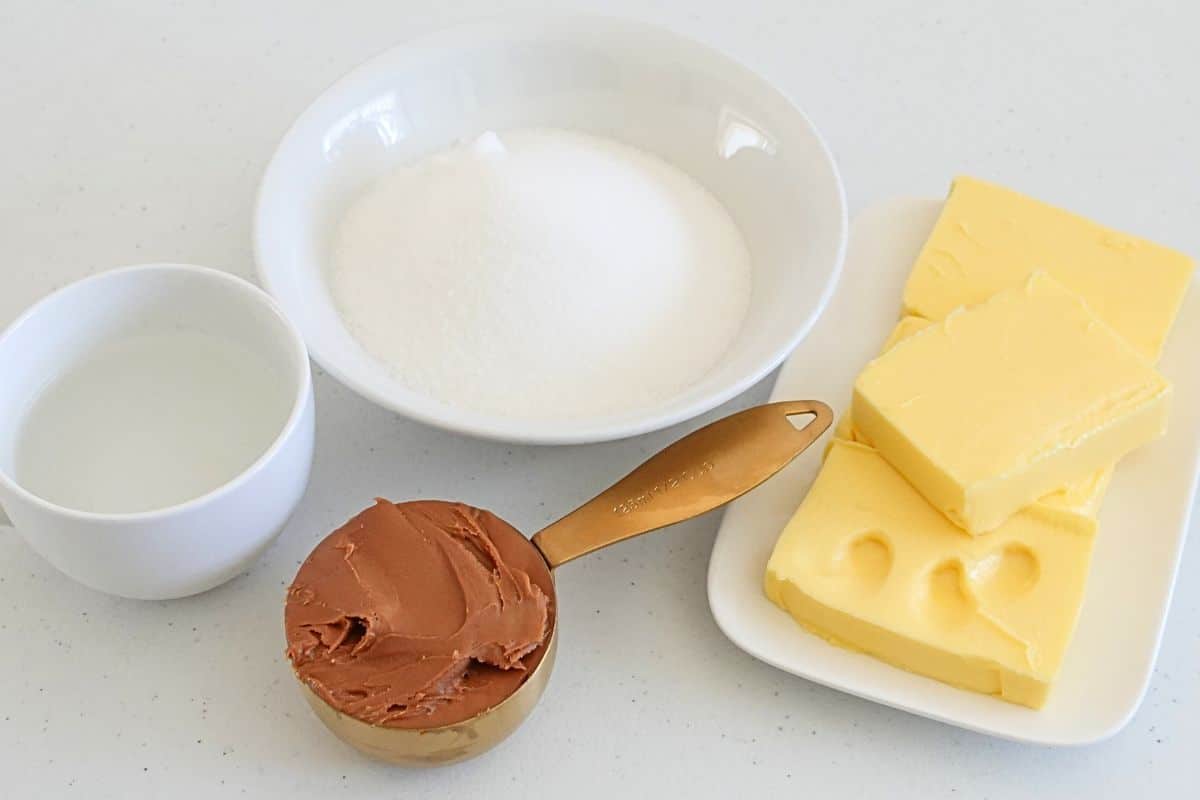
- Unsalted Butter: This is the base of the buttercream, providing a rich, creamy texture and flavor. Using unsalted butter allows for precise control over the saltiness of the final product.
- Granulated Sugar: Instead of powdered sugar, granulated sugar is used to create a syrup when combined with water. This method contributes to the smooth texture of the buttercream.
- Water: Water is mixed with granulated sugar and heated to form a syrup. This syrup is then cooled and added to the butter, creating a stable base for the buttercream.
- Lemon Juice: (not pictured) A small amount of lemon juice is added to the sugar and water mixture. The acidity from the lemon juice prevents sugar crystals from forming in the syrup, ensuring the buttercream remains smooth.
- Biscoff Spread: The inclusion of Biscoff spread infuses the buttercream with a unique, deeply caramelized, and slightly spiced flavor characteristic of Biscoff cookies. This ingredient sets the buttercream apart in terms of taste and aroma.
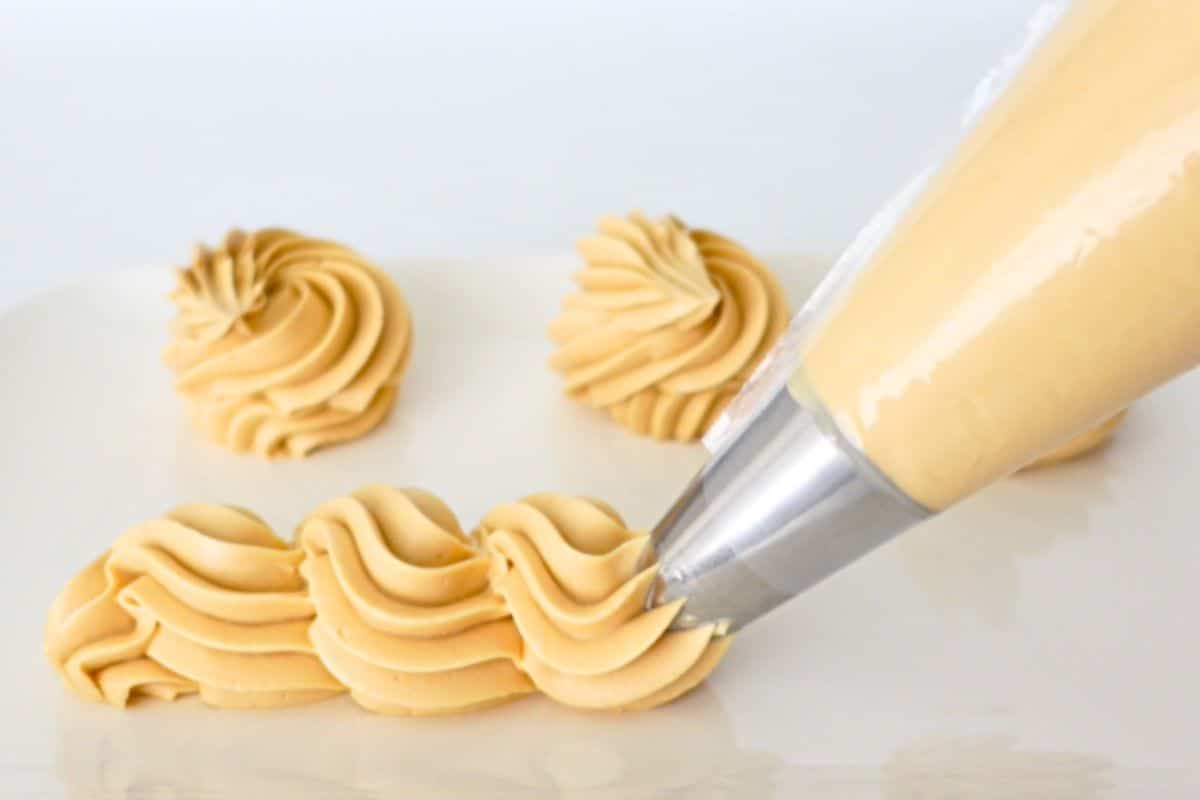
How To Make Stable Biscoff No Grit Buttercream
Start with the Syrup:
Begin by combining granulated sugar, water, and a splash of lemon juice in a saucepan. The addition of lemon juice is critical as it acts as an inhibitor to sugar crystallization, guaranteeing that your syrup stays perfectly smooth.
Boil to Perfection:
Place the saucepan over medium heat. Stir the mixture continuously until the sugar completely dissolves. As soon as it reaches a boil, cease stirring to allow it to boil for a precise couple of minutes.
This step concentrates the syrup, which is instrumental in achieving the buttercream's remarkable stability. This is the secret to my No Grit Buttercream!
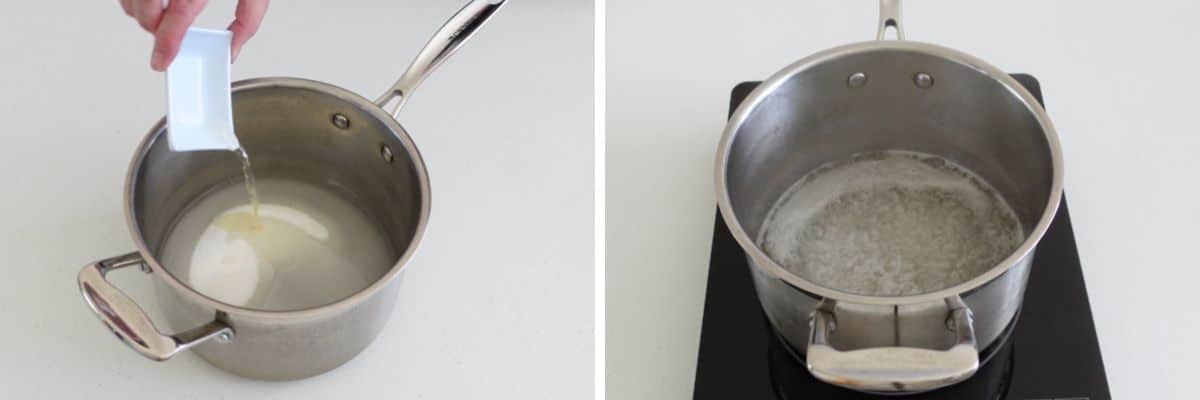
Cooling Process:
Once boiled, remove the saucepan from the heat and let it sit on a wooden board to cool for a brief interval before transferring it to a heatproof bowl. Allow the syrup to cool down to room temperature. Proper cooling is essential to ensure it doesn't melt the butter in the subsequent steps.
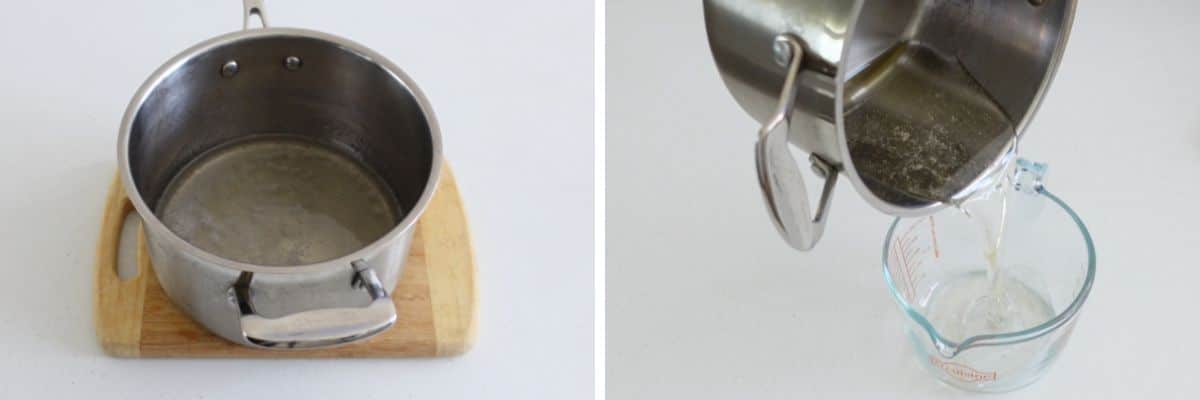
Whip the Butter:
In a mixing bowl, whip the unsalted butter on its own until it's notably light and fluffy. This whipping process is key to introducing air into the butter, making for a lighter buttercream.
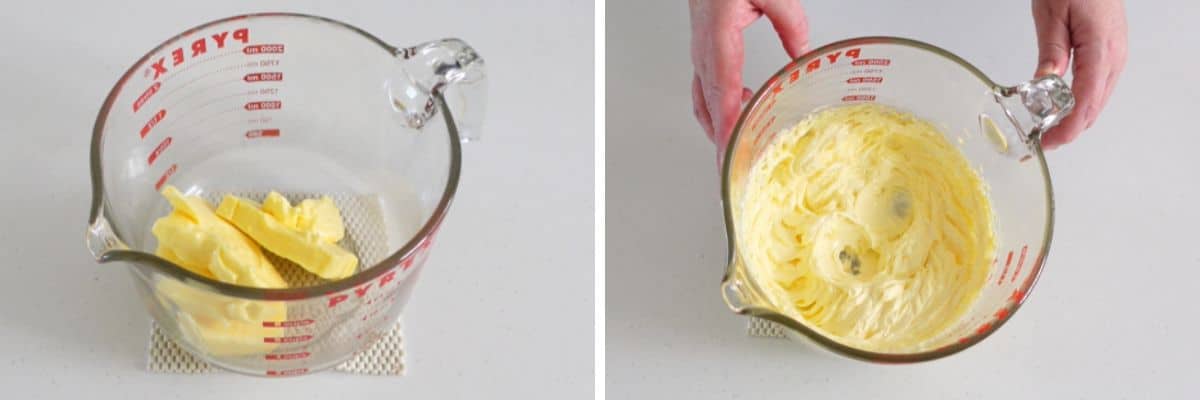
Incorporate the Syrup:
With the mixer on, gradually introduce the cooled syrup to the whipped butter. Continue beating the mixture for a couple of minutes after all the syrup has been added. This integration is what creates the buttercream's base, making it creamy and smooth.
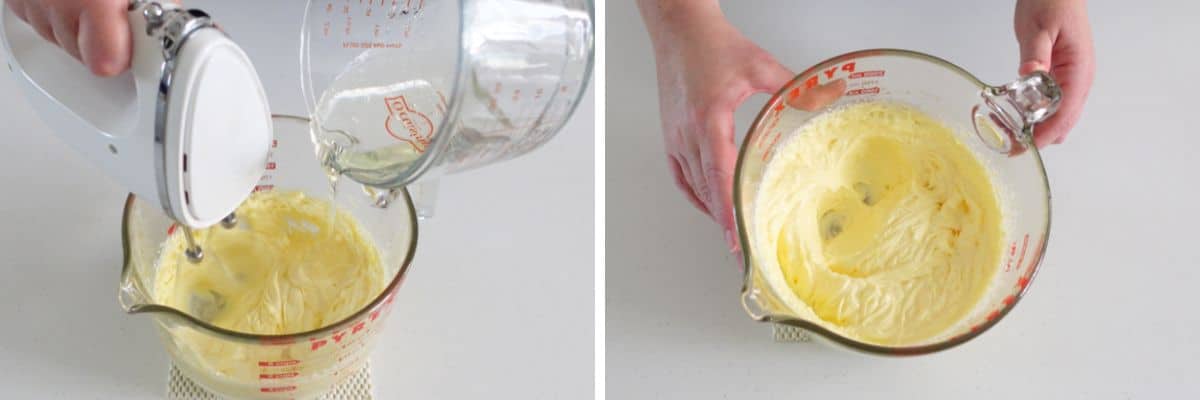
Add Flavor:
For the Biscoff variation, blend in the Biscoff spread at this point, beating until the buttercream achieves a smooth consistency.
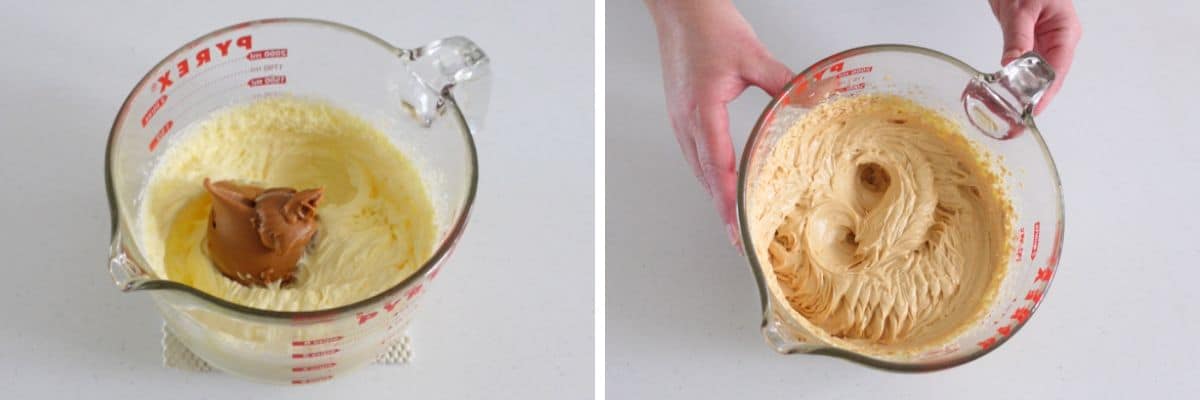
Final Touches:
To finalize, take a silicone spatula and gently fold, scrape, and massage the buttercream. This careful action helps eliminate any air pockets that might have formed during the mixing process, ensuring your buttercream has that perfect smoothness for piping.


How To Make Vanilla No Grit Buttercream
If you who prefer the classic taste of vanilla or you are looking for a more versatile option, this recipe can easily be adapted to make a vanilla version of the buttercream. Simply leave out the Biscoff spread and replace it with 2 teaspoons of vanilla bean paste.
The vanilla bean paste will infuse the buttercream with a rich, aromatic vanilla flavor and the tiny specks of vanilla bean add a beautiful visual appeal. This substitution ensures that the buttercream retains its silky smooth, no-grit texture while offering a traditional vanilla taste that pairs perfectly with a wide variety of cakes and cupcakes.
My Top Tip
The most important tip for achieving the perfect consistency in your buttercream is the addition of lemon juice to your sugar and water mixture. When you're making the syrup, adding just a bit of lemon juice plays a big role in preventing sugar crystals from forming.
This might seem like a small step, but it's the secret behind the silky smooth texture of your buttercream.
Sugar crystals can make your buttercream gritty, but the acidity from the lemon juice keeps everything smooth by stopping those crystals in their tracks.
So, when you're cooking your syrup, don't skip this part! It ensures your buttercream will be as smooth as silk, enhancing your cakes and cupcakes not just in looks but in texture too.
More Buttercream Recipes
- Mars Bar Buttercream
- Pineapple Buttercream (No Powdered Sugar Added)
- Aero Buttercream – Mint Condensed Milk Frosting
- Raspberry Buttercream
Common Questions
You can store this buttercream in the refrigerator for up to one week or in the freezer for up to three months. Make sure it's well covered to prevent absorbing any fridge odors. Before using, let it come to room temperature and give it a good whip to restore its fluffy texture.
Absolutely! This buttercream takes well to gel food coloring. Add the coloring a little at a time until you achieve the desired shade. We recommend you use Gel colors over liquid, as they won't alter the consistency of the buttercream.
Yes, this buttercream works well under fondant. Its stable and smooth texture creates a perfect base for fondant, ensuring a neat and professional finish on your cakes. Just make sure the buttercream is chilled and firm before applying the fondant.
NEW Improved No-Grit STABLE Biscoff Buttercream Recipe
INGREDIENTS
- 250 g (1 cups) butter unsalted and softened
- 300 g (1 ½ cups) granulated sugar
- 120 g (½ cups) water
- 1 teaspoon (1 teaspoon) lemon juice
- ½ cup Biscoff spread
INSTRUCTIONS
- Combine the sugar, water, and lemon juice in a saucepan. Over medium heat, stir continuously until the sugar dissolves.
- Once boiling, cease stirring and allow to boil for exactly two minutes. Remove from the heat and place on a wooden board to cool for 10 minutes. Then transfer to a heatproof bowl and let cool to room temperature.
- In a mixing bowl, beat the softened butter for 5 minutes until it becomes light and fluffy.
- While continuing to beat, gradually add the cooled sugar syrup to the butter until fully incorporated, then beat for an additional 2 minutes.
- Add Biscoff spread to the buttercream, beating for another minute until the mixture is smooth and silky.
- Use a silicone spatula to fold, scrape, and massage the buttercream, eliminating any air bubbles. For a finer texture, mix with a hand mixer at the lowest speed.
- At this point, if you feel the buttercream is too soft, refrigerate the buttercream for about 15-30 minutes before briefly whipping again.
- Your buttercream is now ready to decorate 24 cupcakes with a rose-style swirl or to layer and cover a 2-layer 8-inch cake.
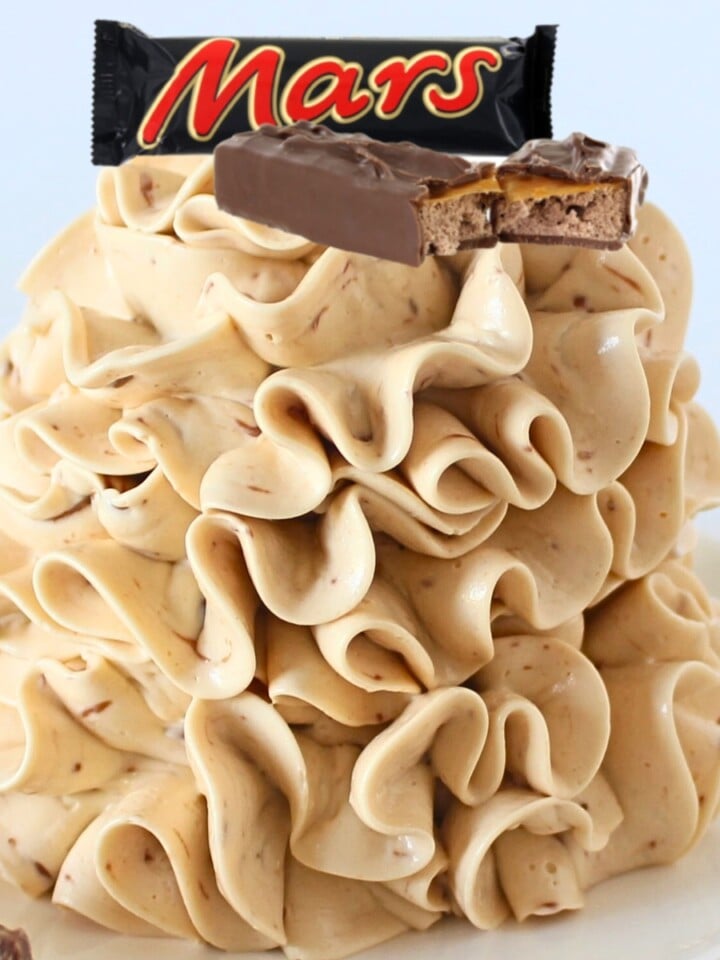
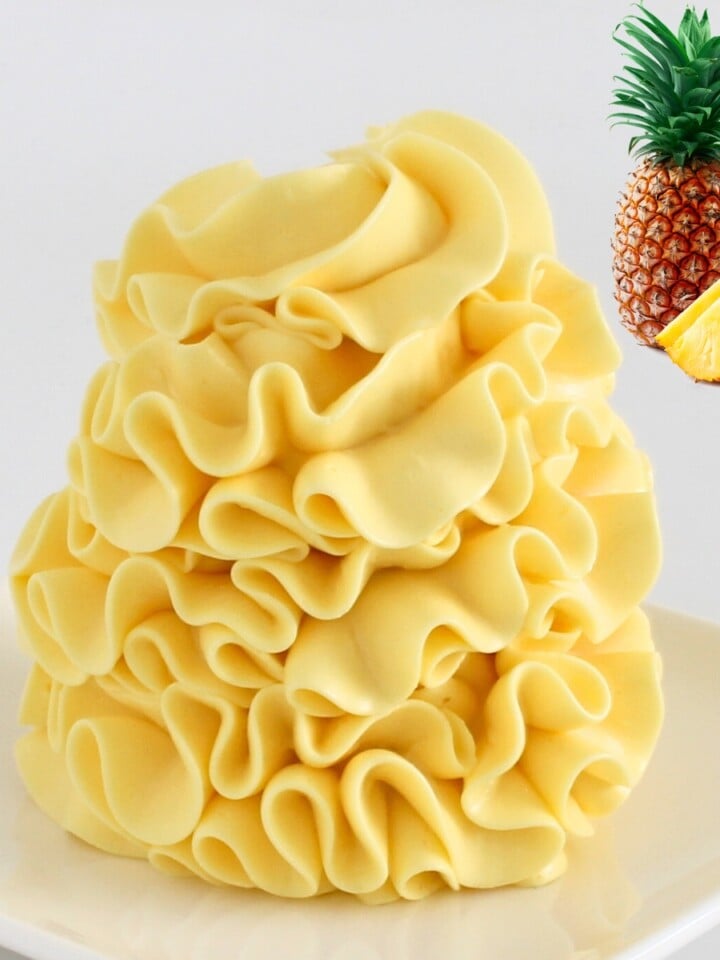
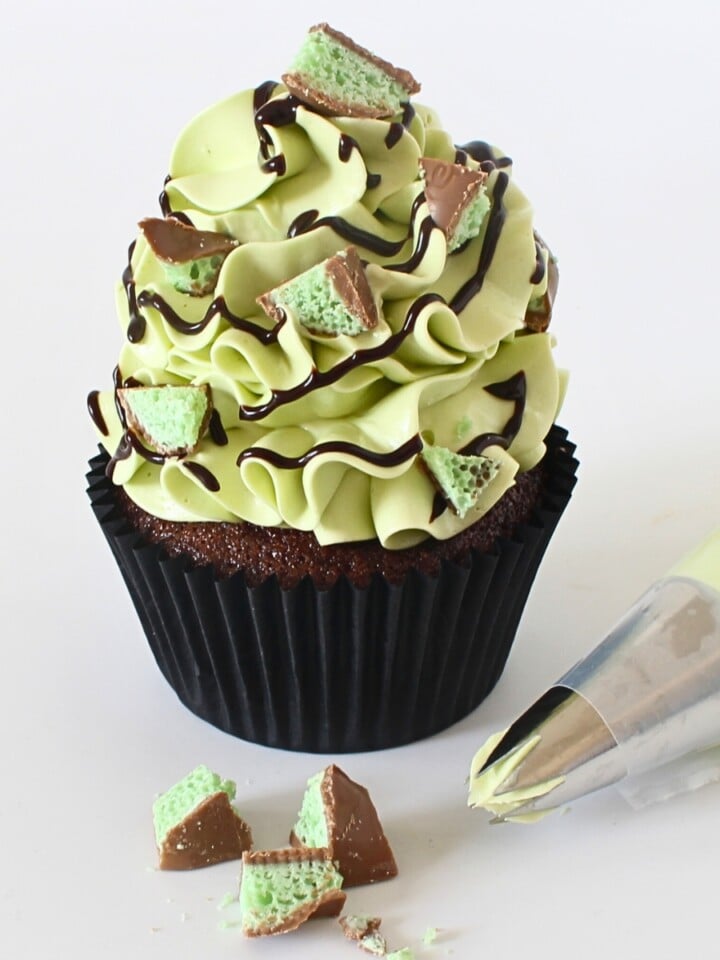

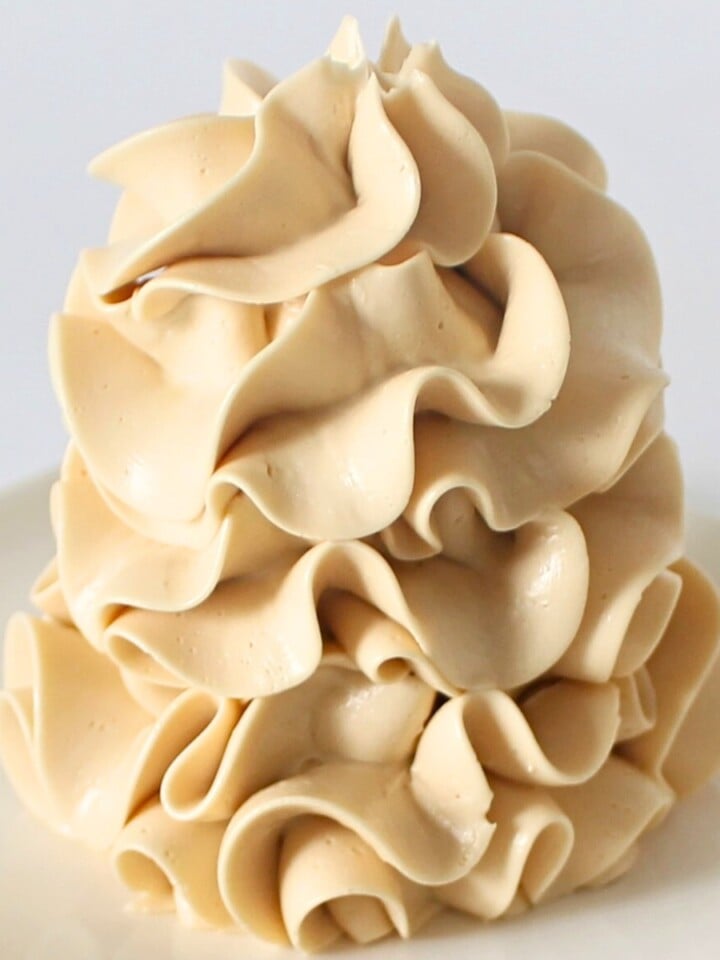
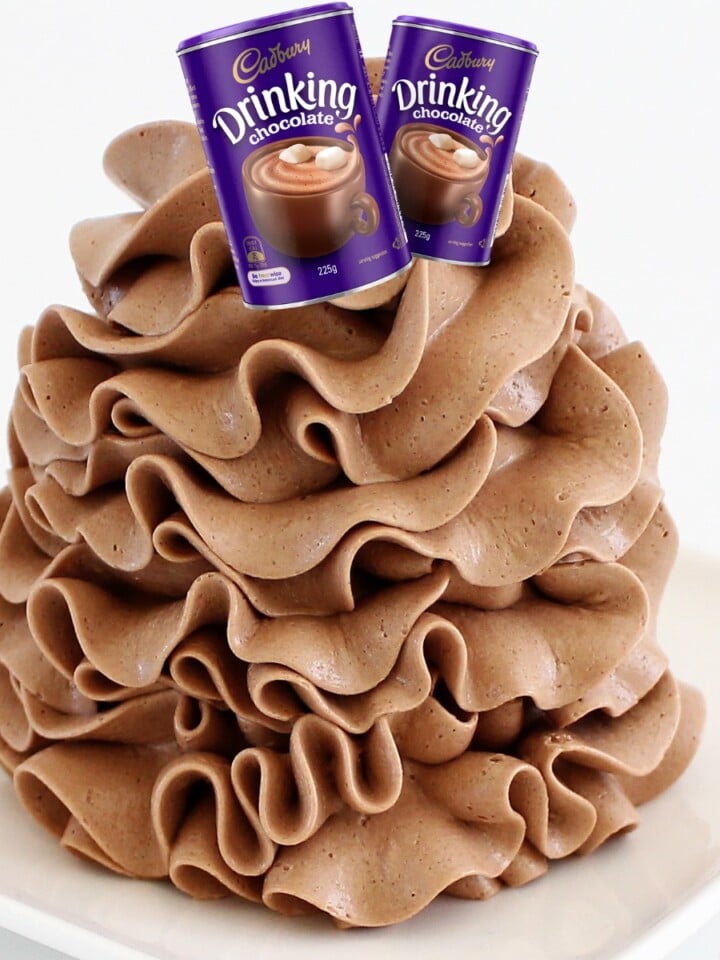
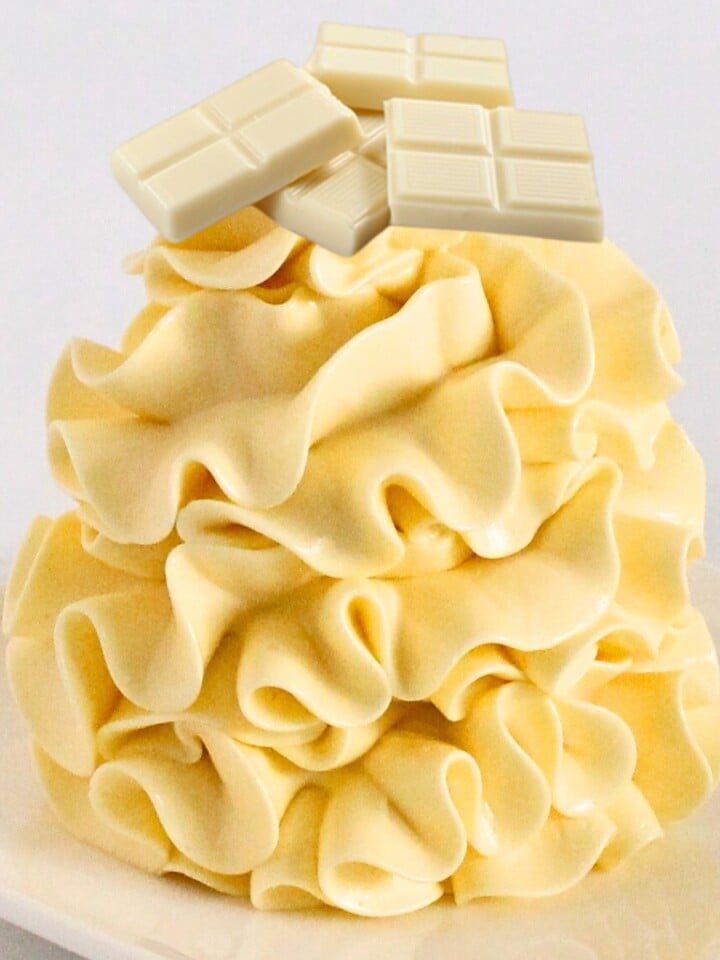
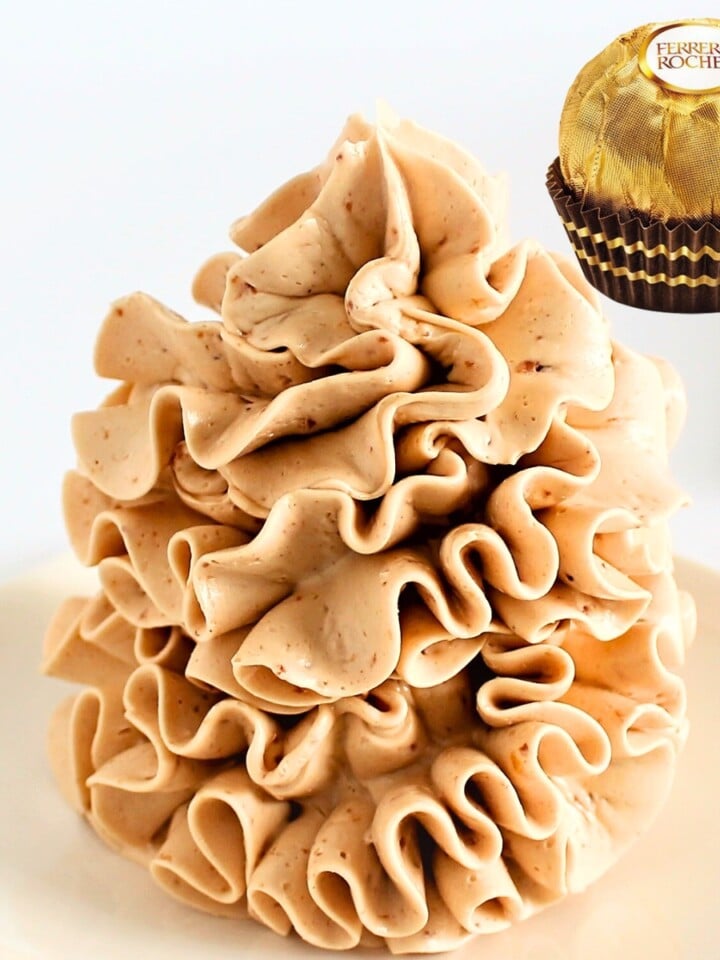
Lois says
Hi- "Biscoff" is spelled "Bischoff" in ingredients list
Fay says
Thank you!
Ally says
Can this frosting be stored at room temperature; if so, how many days? Also, can the sugar be reduced and how much if so? Thank you.
Fay says
Days!? I wouldn't recommend leaving any buttercream out for days. Any buttercream that has even the slightest hint of dairy/protein can make your guests seriously ill. There are very real food safety concerns at play.
Ally says
Thank you. Is it possible to reduce the sugar and how much sugar syrup does the recipe yield? I prefer frosting that isn’t too sweet.
Fay says
Yes, you can reduce the sugar and water for the sugar syrup by half.
Mag says
I actually bought the ( Biscoff spread) And would love to try making this cream and use them for vanilla fluffy buttercupcakes in twenty eight✨️
Fay says
That's great Mag! Please let me know how they turn out.